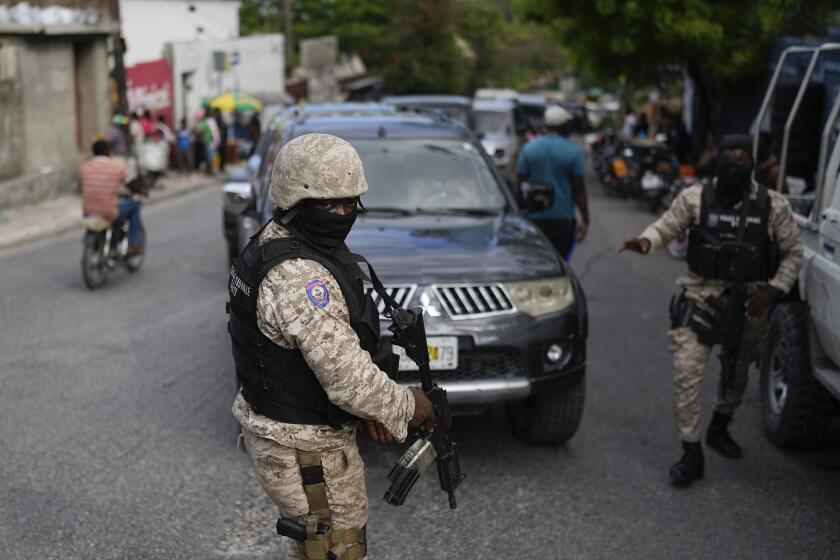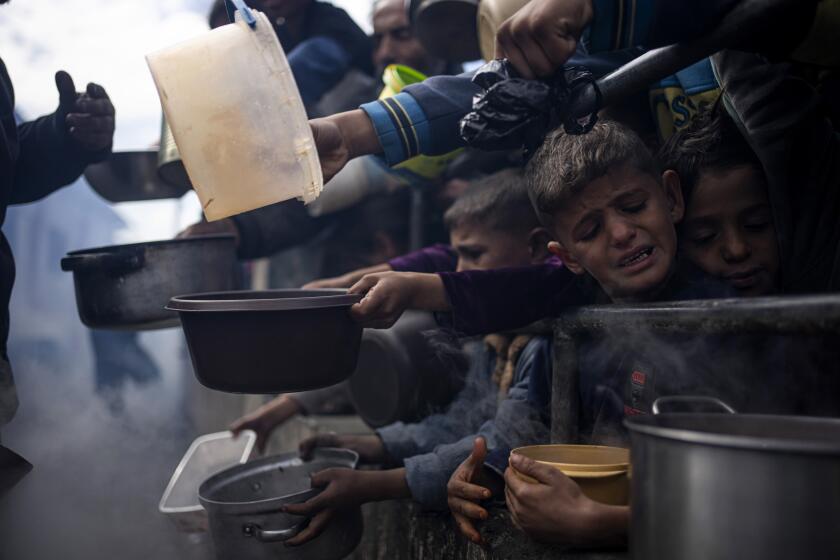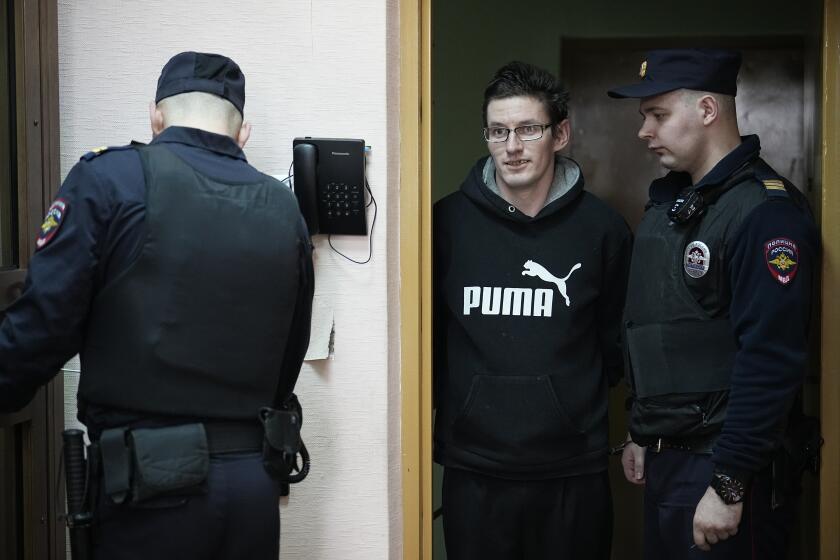Afghanistan welcomes home old, old friends
Emotional homecomings have been a big part of Omara Khan Masoudi’s job this year. In the last nine months, he has witnessed the return of thousands of Afghanistan’s lost and wayward charges from long exile or detention abroad.
The returnees are not people but things: rare and priceless treasures, including a foundation stone that may have been touched by Alexander the Great, a tiny statue of Buddha and coins that changed hands 2,000 years ago.
The items are back in the rugged, battle-scarred land of their origin, which has served as a crossroads between the Middle East and Asia for millenniums. It is a rich history that Masoudi, the director of the National Museum of Afghanistan, has dedicated his life to preserving. Welcoming home pieces that were pillaged from his institution or shipped overseas for safekeeping is like being reunited with old friends.
“We are really happy,” Masoudi said. “Very important and precious pieces were among these artifacts. . . . Afghanistan has a very ancient civilization. We have to preserve them.”
For more than a decade, the museum here in the Afghan capital has been a symbol of the country’s grievous suffering. Once a repository of one of the world’s most valuable collections of Central Asian artifacts, it turned into a building full of broken hopes and dreams, its shell shattered by civil war, its guts ripped out by the radically religious Taliban.
The museum is struggling to get back on its feet, its progress mirroring the often painfully slow improvements underway in the rest of Afghan society since U.S.-led forces toppled the Taliban six years ago.
Reconstruction of the museum building, its roof blown to bits by rocket fire, is nearly finished. Glass panes wink back sunlight from what were ugly, empty window frames.
Workers have cleaned more than 1,500 pieces and repaired 300 others damaged by the Taliban, whose rigid version of Islam considers graven images blasphemous.
The repatriation of nearly 6,000 antiquities this year from Europe was a badly needed vote of confidence for both the museum and the government of Afghanistan, which has been battling a resurgence of Taliban militancy.
In a sign of how much more needs to be done, however, virtually all of those objects remain squirreled away in boxes, awaiting proper treatment and someplace to put them on show. The museum has enough glass cases to display 250 of the tens of thousands of items it owns.
Visitors too are in short supply -- a couple dozen a day on average, many of them university students. During final exams, the corridors are even emptier.
But like the country as a whole, the museum is hoping to rebuild on the strength of foreign assistance and the return of the Afghan diaspora, in this case the many native works and objects of art that found their way abroad both legally and illegally.
The first batch to come back this year, in March, consisted of 1,423 pieces that had been packed off to Switzerland in the late 1990s. Despite the Taliban regime’s objection to images, some key commanders recognized the historical importance of the museum’s holdings and agreed with their adversaries, the Northern Alliance, to send away many artifacts for safekeeping.
The collection, spanning centuries and empires, went on display in northern Switzerland, in possibly the world’s only museum-in-exile. It featured exquisite ivories from Bagram, a 2,300-year-old gargoyle and fly swatters made of yak hair.
When the Afghan government requested last year that the items be returned, and United Nations officials determined that it was finally safe to do so, curator and art expert Paul Bucherer-Dietschi, who took responsibility for the collection in Switzerland, was both relieved and pleased.
“It never belonged to me. It belonged to the international community, and it’s correct that Afghanistan, where it was found, is caretaker of it,” Bucherer-Dietschi said. “I was quite happy to bring this material back, as it is a sign that Afghanistan [is getting] back to normality.”
Perhaps the most prized possession of the lot is a phallus-shaped stone bearing the Athenian symbol of the owl, part of the foundation of the ancient city of Ai-Khanum, which may have been founded by Alexander the Great. If so, it is likely that the legendary warrior handled the piece himself.
“If it would go to auction, the price could be unlimited,” Bucherer-Dietschi said.
An even larger cache of artifacts was handed over by Denmark, more than 4,300 pieces that were presented directly to Afghan President Hamid Karzai in May. Danish police seized the antiquities a few years ago, a trove of plundered and stolen goods containing animal figurines and coins dating to the 1st and 2nd centuries BC.
Looting plagues Afghanistan’s historical sites and excavations; authorities hope to assemble an archaeological police force to combat the problem. In February, the International Council of Museums published a blacklist of smuggled goods to alert auction houses, curators and collectors.
Masoudi reckons that more than half the museum’s original holdings, which comprised 100,000 works before civil war reignited in the early ‘90s, have been destroyed or pilfered and sold off to private international collectors.
During the war, museum staff transferred many items to secret locations around Kabul, braving danger to save irreplaceable pieces. When a mob of Taliban acolytes barreled into the museum and smashed statues and figures that had survived the depredations of centuries, some workers wept.
The campaign of destruction and neglect decimated a collection that, in the 1970s, was described as an astonishing panoply of frescoes, coins, weapons, Islamic art, jewelry and other works of inestimable value.
Brick by brick, with money from the government of Greece and other countries, the institution is being slowly restored. Specialists have helped build up new departments of photography and ceramics.
Foreign largesse has enabled the museum to acquire cameras, scanners and printers. Japan and the Netherlands are providing more display cases.
What Masoudi really wants is a bigger facility in the center of Kabul, to replace the somewhat dreary, ash-colored building the museum has occupied since 1931 on the city’s western edge, which was never intended to be a museum but rather a municipal office.
A sizable parcel of land in central Kabul is available but priced at $3.5 million, a sum the museum cannot afford.
“This is a priority,” Masoudi said. “The museum should be in the center of the city so that everybody is able to visit.”
Until then, he and his staff of 65 soldier on in the cold, drafty halls of the present building.
A plaque at the museum’s entrance keeps their eyes on the prize: “A nation stays alive when its culture stays alive.”
More to Read
Start your day right
Sign up for Essential California for news, features and recommendations from the L.A. Times and beyond in your inbox six days a week.
You may occasionally receive promotional content from the Los Angeles Times.







